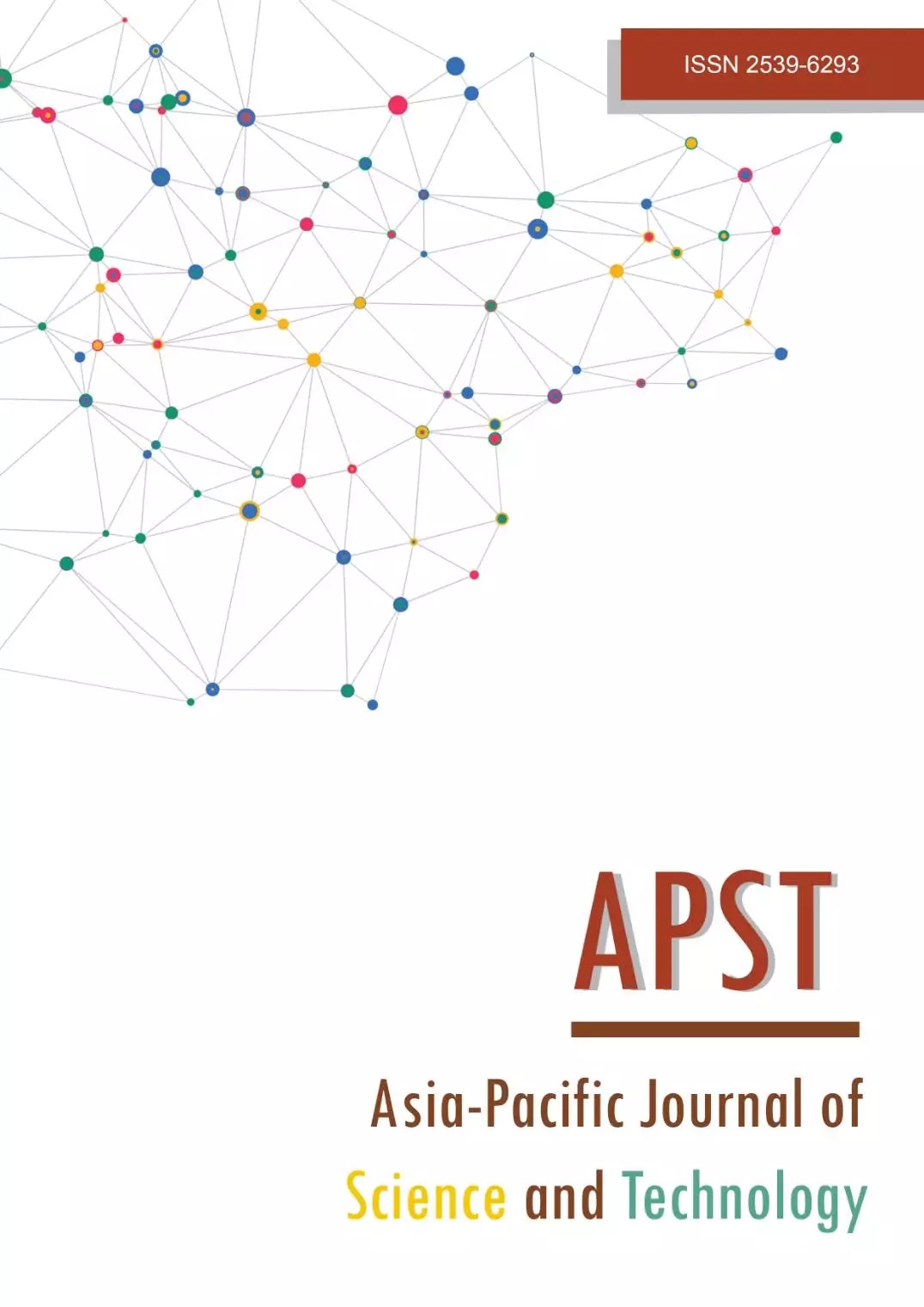The effectiveness of octane booster as additive for fuel quality improvement
Main Article Content
Abstract
Clean energy is predominant topic across several local and international conservation conferences and initiatives. The primary aim of this study is to analyze the effectiveness of octane booster in enhancing fuel quality in automotive gasoline. Research octane number (RON) refers to the octane number of fuel that influences engine performance. This octane number is determined by comparing the knock intensity with the reference fuel mixture during testing. The experimental method is the blending of octane booster and gasoline at different percentage compositions of 0.5:99.5, 1.0:99, 1.5:98.5 and 2.0: 98, respectively. These two organic substances were supplied by Pertamina, a state-owned oil and gas company in Indonesia. The blending results showed a potential increase in octane number in the fuel sample (ASTM D-2699) from 88 to 89.4, 90, 90.5 and 90.8, correspondingly. Furthermore, the effects of involving octane booster on the specific gravity, distillation, and Reid vapor pressure (RVP), as well as gum concentration were also determined. Based on the experimental and analytical data, a reasonable increase was observed in the specific gravity, distillation, and RVP for samples ASTM D-1298, ASTM D-86 and ASTM D-323, respectively. However, excessive use of octane booster has the tendency to enhance gum deposits that slightly influences the engine performance.
Article Details

This work is licensed under a Creative Commons Attribution-NonCommercial-NoDerivatives 4.0 International License.
References
Rankovic N, Bourhis G, Loos M, Dauphin R. Understanding octane number evolution for enabling alternative low RON refinery streams and octane boosters as transportation fuels. Fuel. 2015;150:41-47.
Martini, S, Roni KA. The existing technology and the application of digital artificial intelligent in the wastewater treatment area: a review paper. J Phys Conf Ser. 2021;1858;012013.
Martini S, Ang HM, Znad H. Integrated ultrafiltration membrane unit for efficient petroleum refinery effluent treatment. Clean (Weinh). 2017;45(2):1600342.
Teixeira LSG, Souza JC, Santos HC, Pontes LAM, Guimarães PR, Sobrinho EV, et al. The influence of Cu, Fe, Ni, Pb and Zn on gum formation in the Brazilian automotive gasoline. Fuel Process Technol. 2007;88(1):73-76.
Tamer MM, Mikhail A, Vladimir E, Kapustin M, Abdelkareem MA, Kamil M, et al. Recent trends for introducing promising fuel components to enhance the anti-knock quality of gasoline: a systematic review. Fuel. 2021;291(8):120112.
Anderson JE, DiCicco DM, Ginder JM, Kramer U, Leone T, Pablo HER, et al. High octane number ethanol–gasoline blends: quantifying the potential benefits in the United States, Fuel. 2014;97:585-594.
Nakata K, Sasaki N, Ota A, Kawatake K. The effect of fuel properties on thermal efficiency of advanced spark-ignition engines. Int J Eng Res. 2011;12(3):274-281.
Niven RK. Ethanol in gasoline: environmental impacts and sustainability review article. Renew Sust Energ Rev. 2005;9(6):535-555.
Vallinayagam R, Vedharaj S, Roberts WL, Dibble RW, Sarathy M. Performance and emissions of gasoline blended with terpineol as an octane booster. Renew Energ. 2017;101:1087-1093.
Wang C, Li Y, Xu C, Badawy T, Sahu A, Jiang C. Methanol as an octane booster for gasoline fuels, Fuel. 2019;248(352):76-84.
Radwan MS, Abu-Elyazeed OS, Bakry M, Attai Y. Impact jojoba bio-gasoline as an octance booster on the performance, abnormal combustiob, and emission of a spark-ignition engine, SAE Tech Pap. 2020;1: 5094.
Eendayani ID, Putra TD. Pengaruh penambahan zat aditif pada bahan bakar terhadap emisi gas buang mesin sepeda motor. Proton: J Ilm Tek Mesin. 2011;3(1):29-34
Demirbas A, Balubaid MA, Basahel AM, Ahmad W, Sheikh MH. Octane rating of gasoline and octane booster additives. Pet Sci Technol. 2015;33(11):1190-1197.
Kirana RN. Analysis of the use of additives-PEA in premium fuels on performance and exhaust emissions for 4-step gasoline motors [dissertation]. Bandar Lampung: Universitas Lampung; 2016.
Rand SJ, editor. Significance of test for petroleum products. 8th ed. Pennsylvania: ASTM International; 2010.
Aleme HG, Costa LM, Barbeira, PJS. Determination of ethanol and specific gravity in gasoline by distillation curves and multivariate analysis, Talanta. 2009;78(4-5):1422-1428.
Ferial L, Susanto E, Silalahi MDS. Analysis of noise level in pakupatan terminal (Serang district, Banten province). Indones J Urban Environ Technol. 2016;8(1):81-96.
Tommy H. Experimental study of the effect of additive mixtures on motor engine performance [thesis]. Bengkulu: Universitas Bengkulu; 2018.
Pradelle F, Braga SL, Martins ARF, Turkovics F, Pradelle RN. Modeling of unwashed and washed gum content in Brazilian gasoline–ethanol blends during prolonged storage: application of a Doehlert matrix. Energy Fuels. 2016;30(8):6381-6394.
Surgiarto B, Wibowo CS, Zikra A, Budi A, Mulya T. Characteristic of gasoline fuels in Indonesia blend with varying percentages of bioethanol. E3S Web Conf. 2018;67:02031.
Sunoco Race Fuels [Internet]. Pennsylvania: The Company; 2017-2022. Specific gravity - What is it and why does it matter? [cited 2021 Jun 23]. Available from: https://www.sunocoracefuels.com/tech-corner/article/specific-gravity-matter.


